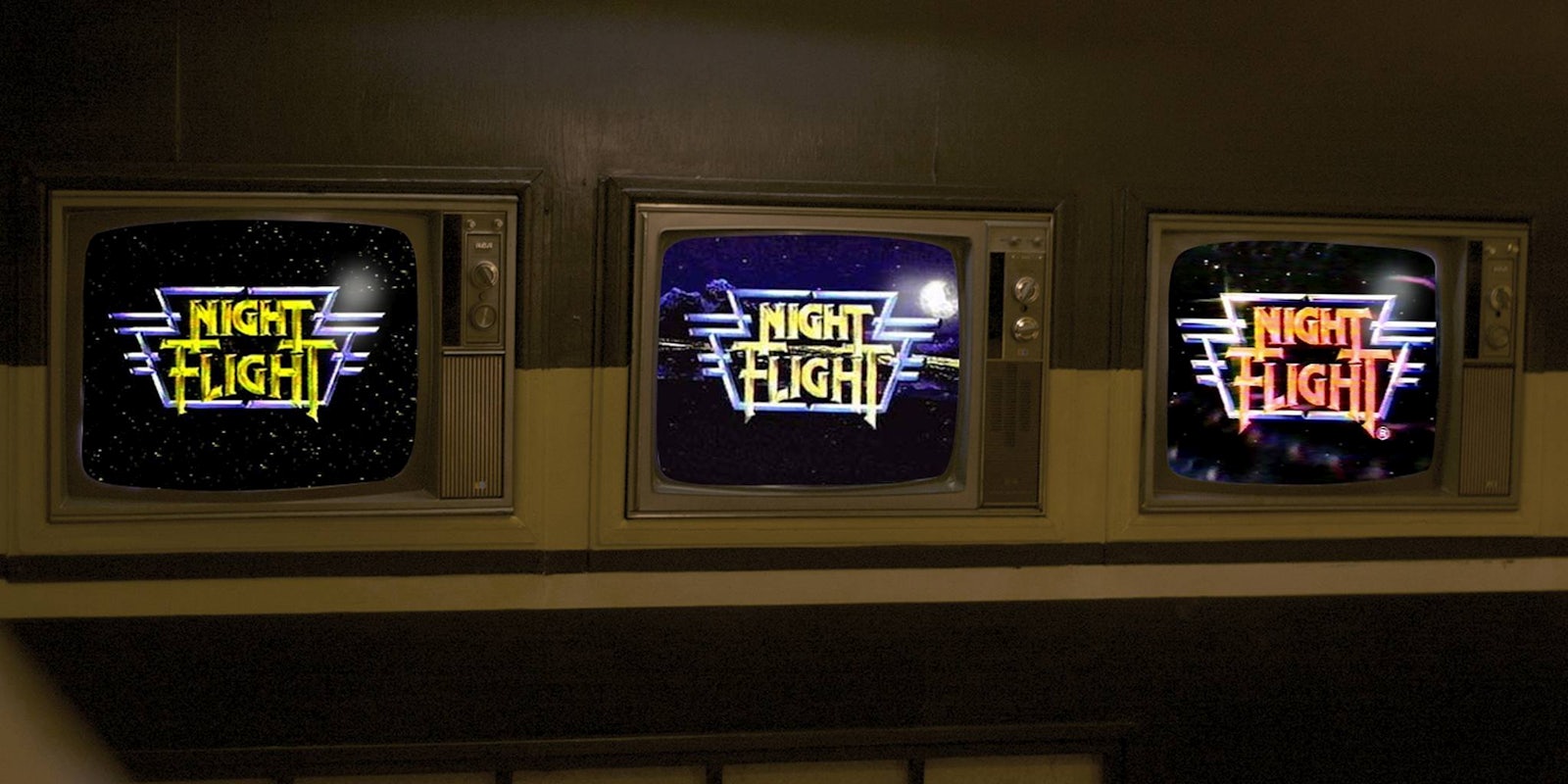If you’ve seen the TV show Night Flight, you remember it. The intro, the logo, an interview—something lodged in your grey matter. You snuck out of bed as a young, impressionable child to watch it. You found it after a late night out, as you were falling asleep in front of the TV. A cool older friend or sibling showed it to you.
Creator Stuart Shapiro has heard it all.
Shapiro launched the show, which ran Friday and Saturday nights on USA Network, in June 1981. Night Flight was, foundationally, a late-night variety show: music videos, interviews, underground movies, bizarre animation, comedy. It might have been the first place you heard about Divine, Devo, or Wendy O. Williams. Night Flight also folded in New Wave Theatre, hosted by late musician Peter Ivers. It spotlighted emerging new-wave and punk bands, and Ivers was a formative part of its popularity until his murder in 1983.
The series ended in 1988, but in its early days, Night Flight existed as a parallel to MTV—or rather, a predecessor. It debuted two months before the music-video channel. The show was a venue for discovery, much like Spotify and YouTube are now.
Night Flight has survived online in several different iterations. Shapiro launched NightFlight.com last year, and the show’s Facebook page now adds add roughly 1,000 people per week.
Shapiro was in Austin, Texas, on Sunday night to host Night Flight: Born Again at the Alamo Drafthouse, featuring a 90-minute retrospective of clips from the series. He called it a “spirited resurrection of time and space.”
Shapiro was also there to advocate for Night Flight Plus, a new streaming site available on Roku that features full episodes of the show and a library of concert clips from MVD. He repurchased the rights to the show’s archive six years ago and organized all the clips, but he didn’t think the timing was right to relaunch the series digitally.
“It became clear that this year, 2016, everything was really right, and streaming is going kind of crazy,” Shapiro told the Daily Dot. “It’s economically viable to fill the channel… we’re off to the races.”
Night Flight Plus, which costs $2.99 per month, joins more niche streaming sites that have sprung up around particular genres, such as Seeso and Exploitation.tv.
During a Q&A after the screening, Shapiro said he thought society was in the midst of a “channel revolution, like we were in the ‘80s.” He revealed that his application to get Night Flight Plus on Amazon‘s Fire device had been rejected—probably, he said, because of “nudity and GG Allin.” When an audience member asked him what he thought of YouTube, he said he was of two minds. “I think YouTube is anti-Night Flight, it’s not curated,” he said. “But you can put anything up there…it’s freedom of expression.”
Freedom of expression is Night Flight’s mantra. Shapiro reminded the audience that, for many viewers, Night Flight was a gathering place for the freaks and geeks. For young kids watching the show late at night in the Midwest, it reinforced the idea that it was OK to be different, and that there were other people out there like you. Host Zack Carlson asked the audience how many of them had been influenced creatively or artistically, or set on their path in life, as a result of watching Night Flight. The question prompted a surprising round of applause.
Shapiro said that eventually he’d like to bring some original programming to Night Flight Plus and experiment with more interactive elements like livestreaming. Adding a personal feel to his project, he claimed that his phone number was the customer support line for Night Flight Plus. He might not know how to help callers with technical issues, he said, but at least he could talk to them.
“I’m committed to it being the nostalgic network,” he said, “not just [for the] ‘80s, but devoted to nostalgia entertainment, with the Night Flight library as its foundation.”


